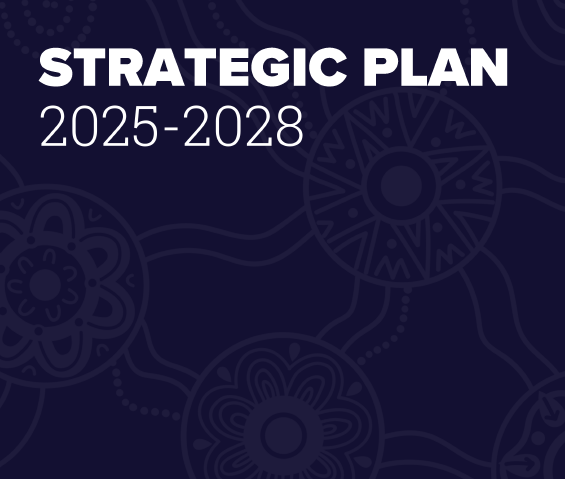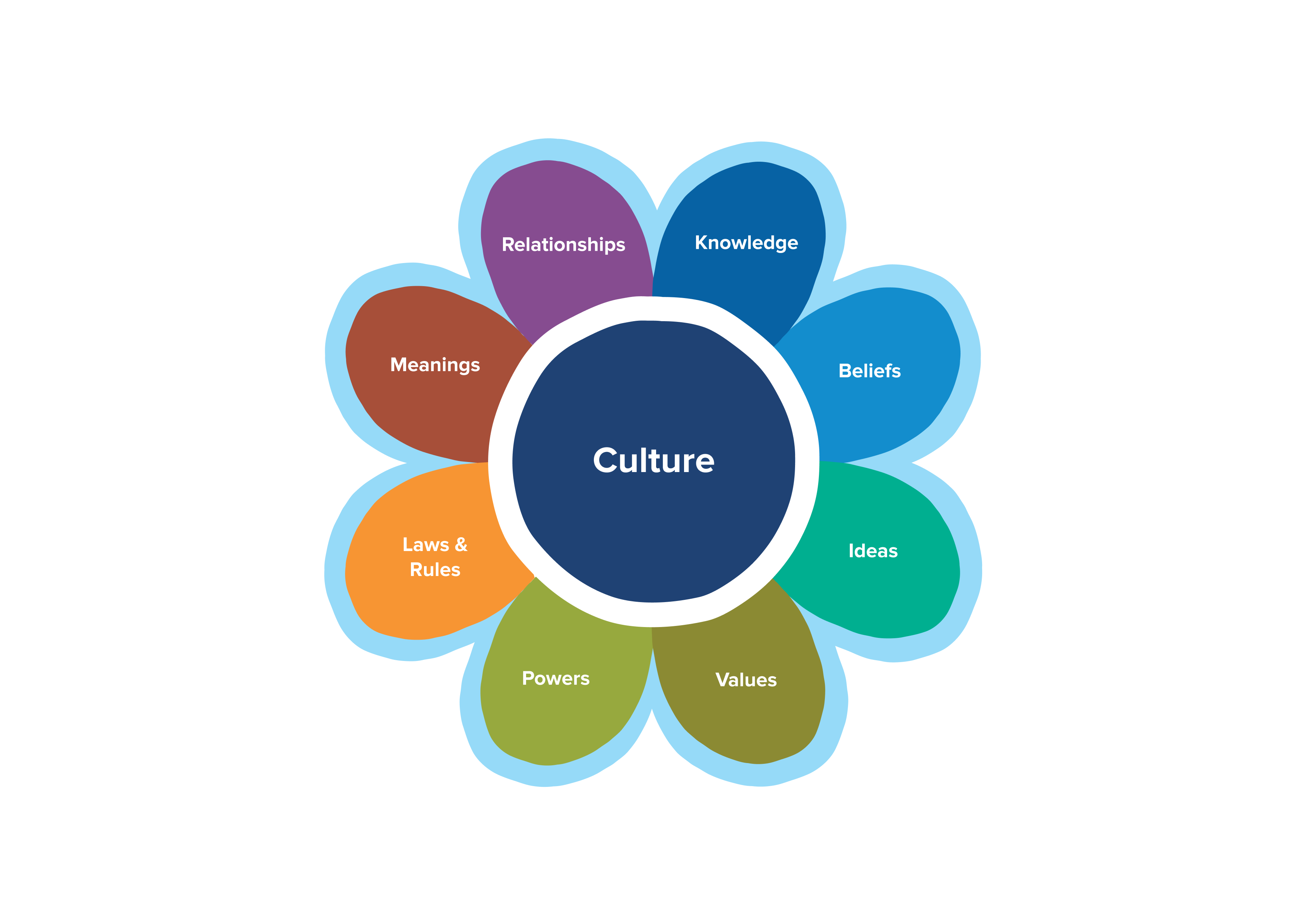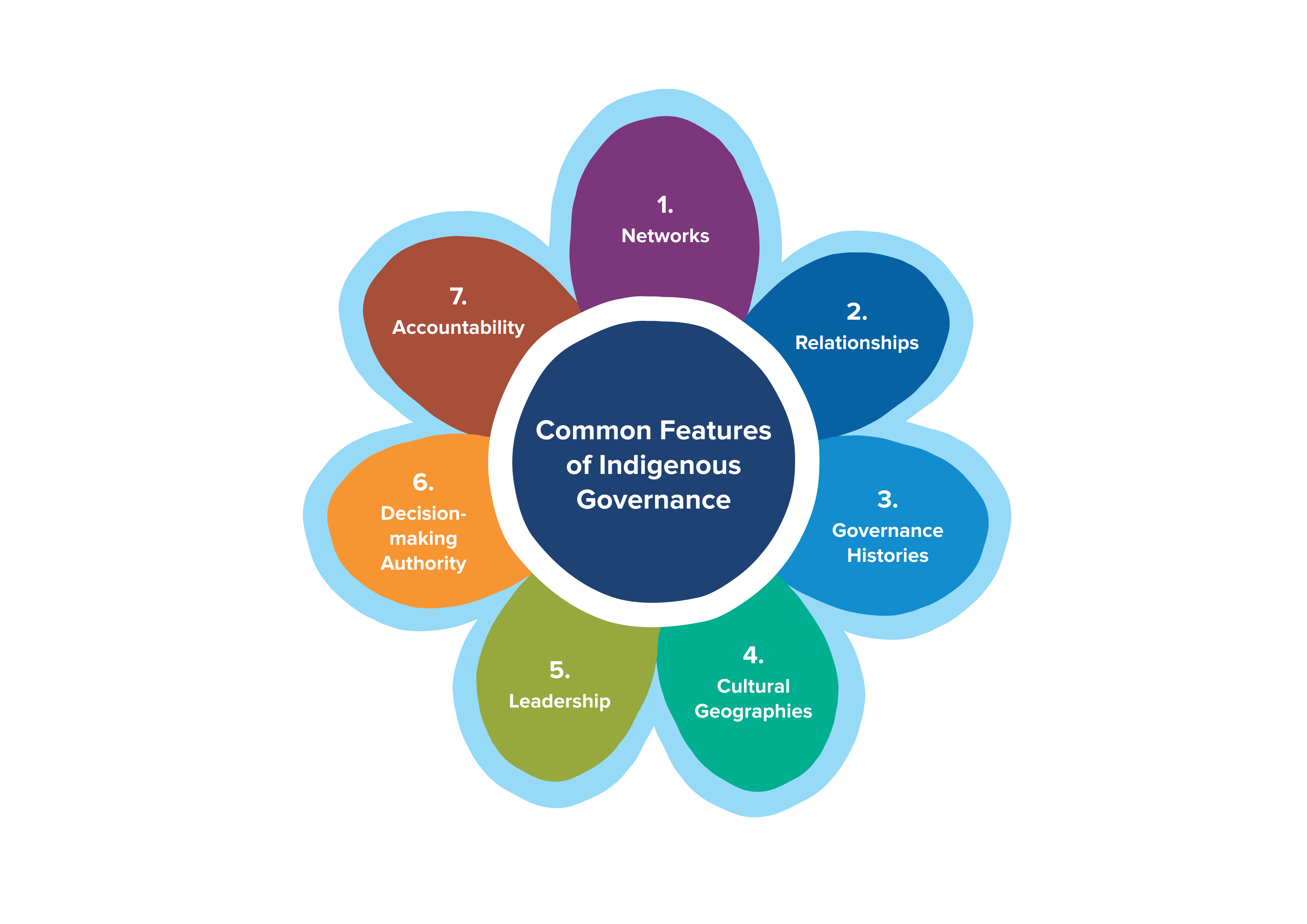Celebrating a Trans-Tasman Partnership: Māori and Australian First Nations Governance Leaders Unite...
Indigenous governance

Aboriginal and Torres Strait Islander peoples have been practising governance since time began. What makes it Indigenous governance is the role that Aboriginal and Torres Strait Islander culture plays. We look at what this means and the common features of Indigenous governance.
While reading this topic, think about the following questions and how they relate to your organisation, community or nation:
- Can you think of how culture provides the foundation to the governance of your organisation, community or nation?
- Think of an organisation, community or nation you’re involved in. What cultural values and traditions do they use to govern themselves?
- What are the seven common features of Indigenous governance?
- What do they mean to your group?
- Are there any areas of Indigenous governance that you think your organisation, community or nation needs to work on?
Indigenous culture and governance
Indigenous culture is the system of knowledge, beliefs, ideas, values, powers, laws, meanings, and relationships shared by members of a group, community or nation that guides their way of life. Some groups use the term ‘lore’ to refer to all elements of their culture.
Culture lies at the heart of Indigenous governance. It informs a group’s values and ideas about what is the ‘right way’ and ‘wrong way’ of sharing power. Culture is one of the 8 elements of governance.
“Strong cultural governance is an important foundation not only for economic development but for the strength of communities as a whole.”
– Marcia Langton’s Agreement, Treaties and Negotiated Settlements.
Agreement, Treaties and Negotiated Settlements
A particular culture is shared by people over generations through:
- oral traditions
- written meanings
- participation in group activities
- socialisation of young children.
A shared culture enables people to understand and communicate with each other. It helps them behave in an accepted way and do things together towards a common goal.
“In the old days Yolngu people lived within the pattern of laws which were passed down through the generations and are still with us today. The patterns that go through songs, dances, art, (ceremonial) and sculpture all relate to each other. Pattern is the beginning, middle and end of Yolngu life. Patterns can be Yolngu or Balanda [white person], e.g. stripes, dots, lines, curves, rectangles, diamonds, squares, circles. But our Yolngu law patterns tell us a story.”
– Dundiwuy 2 Mununggurr/Wunungmurra, Yolngu Artist, Northern Territory
Aboriginal and Torres Strait Islander peoples continue to share many deep cultural features to govern themselves. These include:
- networked systems of kinship and family support
- deep connection to Country (lands and waters)
- value of ceremony, traditions and ritual
- respect for law and the authority of Elders
- respect for women’s and men’s areas of knowledge
- mutual responsibility and sharing of resources.
Culture can change over time – sometimes slowly, sometimes quickly. This can be due to people’s own choice or because the change is imposed from the outside. As a group’s culture changes, their governance arrangements may also change.
Making big changes to governance can sometimes cause changes in people’s culture. For example, to meet the current needs and interests of the community, a group in Central Australia is working to have more women on its boards and committees. Until recently, their governing bodies were usually led by men. This example shows how a culture shift can lead to a governance shift.
Changes to governance are more likely to be accepted and supported by members when the changes come from within the group and are seen as being culturally legitimate.
Ideas about governance can differ from one group to the next. Problems may arise when different systems of governance interact. They may have competing values and opposing expectations about what is the ‘right’ way of governing.
Start your journey to identify your culture as a base for your governance.
Aboriginal and Torres Strait Islander viewers should be aware that this video may contain images and voices of persons who have passed.
Nyamba Buru Yawuru (NBY) is a not-for-profit company owned by the Yawuru Native Title holders through a corporate group structure. The company was the Category A Winner in the 2018 Indigenous Governance Awards. In this video, Peter Yu, CEO and Nini Mills, Community Development Manager, explain how Yawuru cultural values and practices are embodied in the philosophy mabu liyan (good spirit). They talk about how this serves as a cultural base that informs what they do, how they do it, and how it informs their governance.
Common features of Indigenous governance
At the foundation of Aboriginal and Torres Strait Islander governance in Australia is a set of deep underlying features of Indigenous law and culture.
These features tell the story of each Aboriginal and Torres Strait Islander group and their links to the land and to each other. The features are evident in everyday life and how people get things done. They’re used by groups to design their governing arrangements.
In its work with Aboriginal and Torres Strait Islander organisations, communities and nations across Australia, the Indigenous Community Governance Research Project documented this pattern of ‘features’. These features lie at the heart of Indigenous thinking, and inform these communities’ diverse solutions for rebuilding governance.
1. Networks
A network is like the interwoven threads in a string basket. It’s people and groups that are independent but connected. They help one another by sharing knowledge, resources and ideas.
Networks enable people and groups to cooperate for agreed purposes.
We can see Aboriginal and Torres Strait Islander networks in:
- extended families
- linked groups
- communities
- ceremonial traditions
- kinship relationships
- groups of leaders.
Networks are often depicted in Aboriginal and Torres Strait Islander art.
Indigenous governance is a networked form of governance. It’s based on pathways and layers of relationships and connections between people, places and things – past, present and future.
These relationships create an elaborate web where rights and interests, decision-making authority, leadership and accountabilities are spread across different interconnected social layers and cultural geographies.
Today, the many hundreds of Aboriginal and Torres Strait Islander organisations in Australia are linked by these networks. This includes the organisations’ governing bodies working in communities.
Identifying your networks is one way to strengthen or rebuild your group’s governance. Sometimes this means sitting down and starting a yarn with your family and kin about how everyone is connected.
- How are families, households, clans or language groups connected on both your parent’s sides?
- How well are the layers of your network working?
- How could this network be better reflected in your governance?
You can read more about networks in Aboriginal and Torres Strait Islander networked governance.
2. Relationships
Strong internal relationships and a clear idea of group membership are important for effective, culturally legitimate governance. When groups decide to rebuild their governance, they often start by focusing on sorting out these relationships. This helps to determine who has authority to make decisions and reaffirms their collective identities – that is, who is the ‘self’ in their self-governance.
This is especially important when groups need to balance local leadership and decision-making authority with:
- maintaining wider connections
- participating in larger-scale structures – such as regional, state or national organisations and governments.
This often involves people and groups getting together to talk about how they are related to each other. Both in the past, and how they want to stay connected into the future.
It’s important to start with relationships, rather than go straight into creating new governance structures. The relationships help determine what kind of structure best suits your group’s culture and way of doing things.
You can read more in Know your people.
3. Governance histories
The histories of Aboriginal and Torres Strait Islander organisations, communities and nations shape their governance arrangements.
Exploring your group’s governance history can shed light on the governance issues you face today. It can help to:
- identify which parts of your governance have been imposed on you and which reflect your own ways of governing
- clarify the things about your past ways of governing that you value and want to protect and strengthen
- give you a clearer understanding of the type of governance you want for the future.
For help mapping your governance history, see Learn from history.
4. Cultural geographies
We call the relationships based on shared cultural connections to other people and Country ‘cultural geographies’. These cultural geographies of people and place are central to Aboriginal and Torres Strait Islander networks, and to networked ways of governing.
Cultural geography is about the way peoples’ collective identities are based on their:
- deep ties and attachments to areas of land (Country)
- rights and responsibilities to look after that Country.
The governance arrangements of Aboriginal and Torres Strait Islander organisations, communities and nations are often associated with the boundaries or characteristics of these geographies. For example:
- land-owning groups
- language groups
- ceremonial and gender networks
- leadership hierarchies
- extended family networks for a Country.
These boundaries are often very different from non-Indigenous administrative, town and state boundaries.
Using cultural geographies gives greater legitimacy to new governance arrangements. This is especially so when it involves land issues and nations. It means that groups ‘fit together’, make decisions together and work together better.
To learn about identifying the cultural geographies relevant to your context, see Connection to Country.
5. Leadership
Networks of influential individuals – leaders, Elders and directors – is a deep underlying feature of how Indigenous governance works.
These leaders influence and help people to:
- cooperate
- use resources
- resolve problems
- help a group care for Country
- get things done.
Aboriginal and Torres Strait Islander leaders have powerful networks and knowledge. They can form connections in and between communities and regions. But their authority is based on the context. This means the authority of leaders depends on the issue, the group of people, or area of land involved. For example, a small family issue is dealt with by people who have authority in that family. A big regional issue is led by people who have those wider relationships and areas of authority.
Because they’re part of close social networks, leaders can experience competing pressures and demands. It’s important for groups to discuss who are the right people to lead in different circumstances.
To be effective, leaders need to have and maintain:
- respect from their group for their knowledge and experience
- valued personal qualities and skills
- strong networks of social support
- responsibility for looking after their group members
- downward accountability to all their group members.
Demonstrating these things contributes to leaders’ ongoing cultural legitimacy. Effective leaders can heal internal divisions and help limit or resolve disputes.
Read more on leadership in Aboriginal and Torres Strait Islander leadership.
6. Decision-making authority
The Aboriginal and Torres Strait Islander approach to decision-making is to build consensus within a group and across networks. Consensus is through slow agreement and can change over time. It’s about moulding opinion, which is often done by influential leaders. When achieved, it can create chains of cooperation in and across networks.
Subsidiarity is a sophisticated quality of Aboriginal and Torres Strait Islander networks about who makes decisions. It means that decisions about an issue are made at the most immediate or local level by those that are most affected by the outcome. For example, the owners of the land, resources, knowledge, or dispute.
Decisions that affect the wider group or multiple communities need to be made at a more centralised level for the benefit of everyone. A group of representatives from the smaller groups come together to make the decision for the benefit of the larger group or communities.
There can be problems if:
- the ‘wrong’ people or layer of a network are involved in making decisions
- groups with competing interests undermine the consensus of the larger group
- it’s not clear who’s making decisions about what – especially for issues affecting a large, culturally diverse group of members.
Problems can multiply when legal requirements for decision-making contradict the consensus of the wider community or nation. These requirements are often laid out in an organisation’s rule book or constitution.
It’s important that the right people are making the right decisions for the right things, and that this is reviewed regularly. For organisations, decision-making processes should be laid out in a policy.
To help you with your decision-making processes, see Decision-making.
7. Accountability
Accountability means being answerable or responsible to a person, family, group or network.
The dispersed and overlapping nature of Indigenous leadership and decision-making means that accountability is dispersed across the layers of networks.
Accountability is based on rules, and checks and balances to make sure people do the things they should and don’t do the things they shouldn’t.
Government departments and private sector companies tend to emphasise upward accountability to themselves for their funding and support. Aboriginal and Torres Strait Islander peoples emphasise downward accountability to members of their own group.
Governance solutions are more effective and legitimate when accountability is clear. That is, it’s clear and agreed who makes decisions. And who then tells other parts of the organisation, community or nation about those decisions.
To learn more about aligning governance with your group’s standards and expectations, see The importance of cultural legitimacy.
Aboriginal and Torres Strait Islander viewers should be aware that this video may contain images and voices of persons who have passed.
Here, winners and finalists of the 2022 Indigenous Governance Awards explain how they have customised their governing arrangements to suit their purpose and meet the unique needs of their communities.
We’ve translated our extensive research on Indigenous governance into helpful resources and tools to help you strengthen your governance practices.
Stay connected
Subscribe to AIGI news and updates.









.png)




